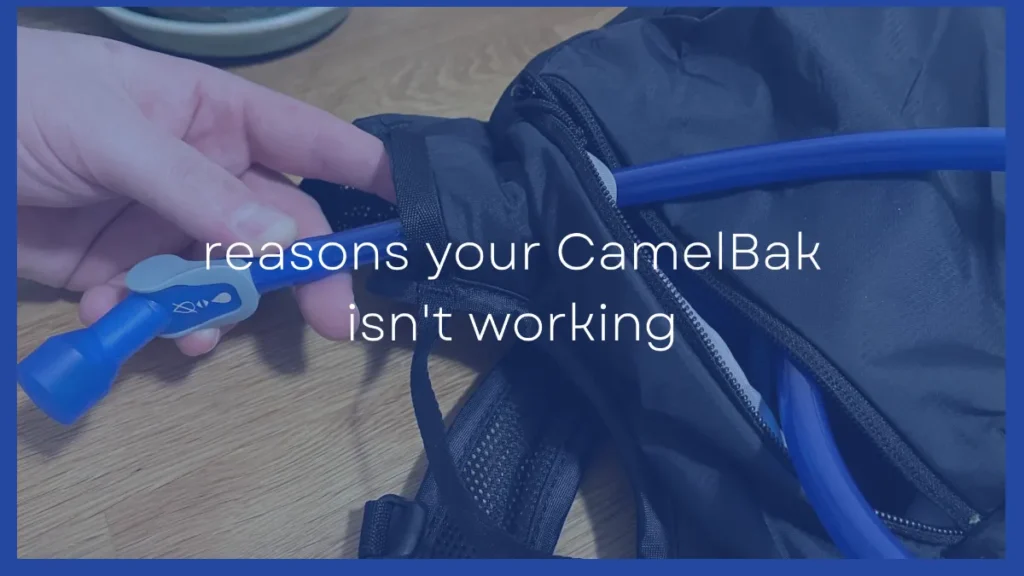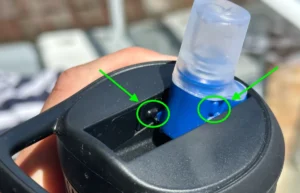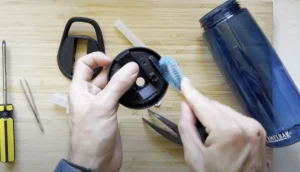A CamelBak bladder that suddenly stops working can be pretty frustrating, especially if you were relying on it for hydration on a multi-day hike or long distance bike ride.
But to figure out how to fix your CamelBak, you first need to figure out what exactly is causing the problem.
A CamelBak that suddenly stops working is usually caused by a blocked delivery tube or air entering the system when it shouldn’t.
The delivery tube can become blocked if the QuickLink port is damaged or dirty, the bite valve is sealed, there’s a kink in the tube, or water has frozen in the tube or reservoir.
Excess air is typically caused by a loose connection somewhere in the system or too much air left in the bladder after filling.
If you can identify the cause of your CamelBak not working as it should, it’s usually pretty easy to correct. Below are the six most common reasons a CamelBak stops working, how you can identify the issue, and what exactly you can do to fix it.
1. Your QuickLink Port Is Damaged Or Clogged
If your CamelBak’s QuickLink Port is clogged or damaged, you may have a hard time pulling water through the delivery tube.
The QuickLink Port is where the drink tube connects to the main reservoir.
To check if the QuickLink Port is working correctly:
- Remove the delivery tube.
- Fill the bladder as full as possible with water and seal it shut.
- Hold the bladder above the sink and press the QuickLink Button. No water should come out. If it does, the port is likely damaged.
- Still holding it above the sink, grab the bladder so the opening of the QuickLink Port is facing downward.
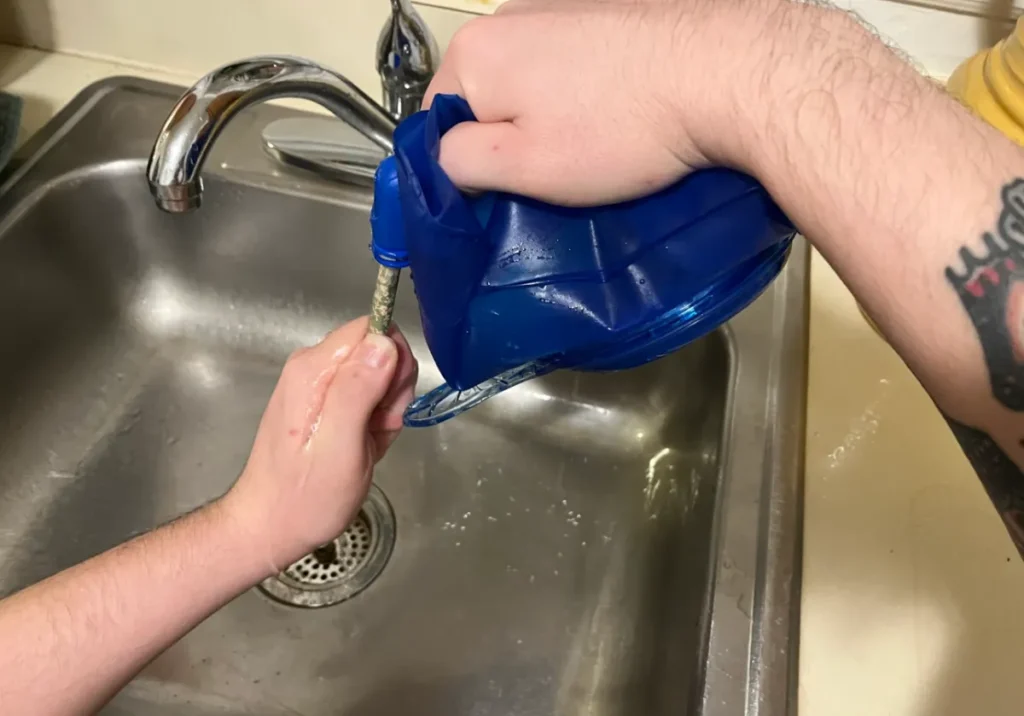
- Using a chopstick (or something similar), compress and hold the spring-loaded valve inside the QuickLink Port. Water should pour out rapidly for as long as it’s held. If not, your port may be clogged or damaged.
If you think there’s damage to the port, you’re usually better off just buying a new bladder. You can’t realistically replace a QuickLink port and CamelBak doesn’t sell replacement parts.
If it’s clogged, soaking it in vinegar or CamelBak cleaning tabs may loosen whatever gunk, residue, or mold is causing the blockage.
2. Your New Bite Valve Is Still Sealed
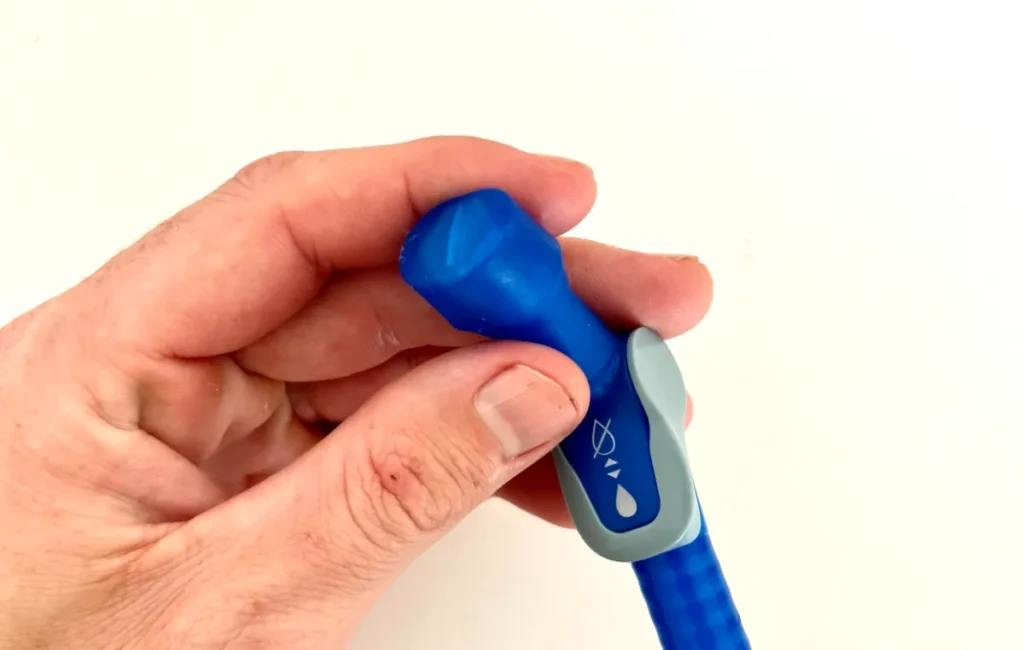
CamelBak bite valves are sometimes still sealed at the drinking slit when brand new. They’re intended to split open the first time you take a drink, but it doesn’t always work as intended.
So if you’ve just purchased your CamelBak or have recently replaced the bite valve and are unable to pull water through the mouthpiece, there’s a good chance this is the problem.
To test, pinch the end of your bite valve — you should see a small slit open (nearly) from end to end. If there’s no opening, or it only goes part way across, it’s a pretty easy fix. I've done a full guide on how to fix a CamelBak bite valve with no hole.
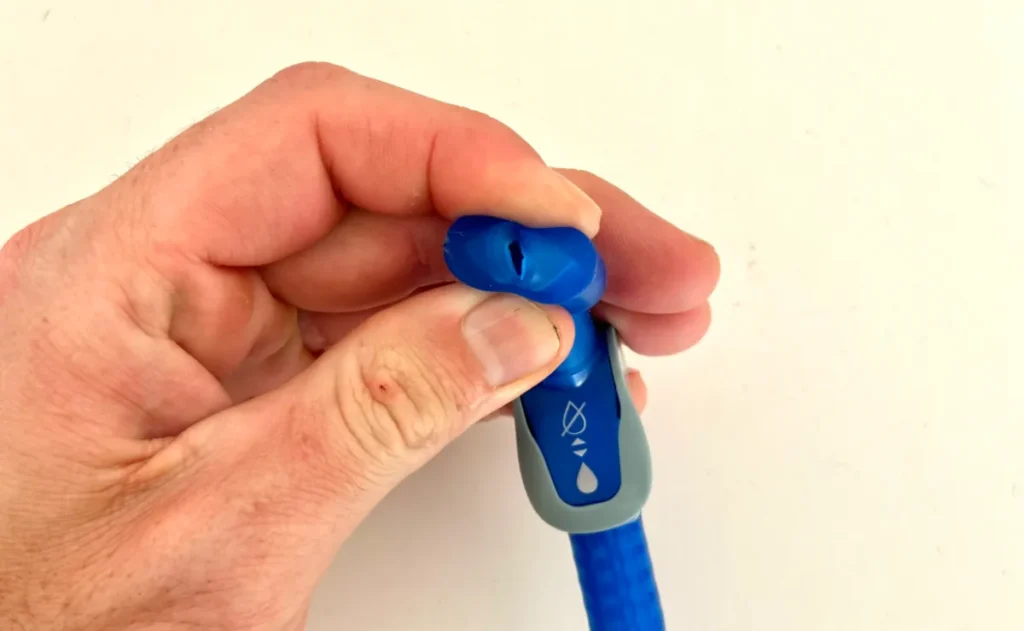
Oftentimes, simply squeezing and rolling the end of the bite valve between two fingers is enough to pop it open.
But if it’s being stubborn, you may need to pry it open using a fingernail or knife or you can soak it in hot water for 20 minutes or so and then try squeezing it open.
3. The Delivery Tube Is Kinked
If your QuickLink Port and bite valve are working fine, but you’re still having trouble pulling water through your CamelBak, it may be as simple as a kink in the delivery tube.
It’s particularly a problem if you keep your bladder in a backpack other than the one your CamelBak came with because the bladder will shift around more in the pack.
The next time it happens, slide your backpack off and take a peek inside to see if it’s the issue.
If so, you may want to rig a strap to the top interior of your pack to suspend your bladder — similar to the one found inside CamelBak’s backpacks.
If this has been an ongoing issue, you may also need to replace your delivery tube. Once a tube develops a kink, it’s much easier for it to kink again in the same location.
4. There’s Too Much Air In The Bladder
If your CamelBak still has water in it but occasionally only gives you a mouthful of air when you try to take a drink, you may be leaving too much air in the reservoir when you fill it.
On most bladders, the port for the delivery tube is a few inches above the actual bottom of the reservoir. As a result, when there’s air in the bladder and the water level drops below the port, you won’t be able to pull the remaining water.
Luckily the solution is really simple. Just squeeze as much air out of your bladder as possible every time you fill it.
5. It’s Too Cold Out
If you use your CamelBak in below-freezing temperatures, the water in the delivery tube (and eventually the reservoir) can freeze solid, preventing you from being able to drink.
The colder the temperature, the faster it’ll happen.
While you can’t fully prevent water from freezing in your CamelBak in super low temperatures, there are a few steps you can take to slow it down significantly.
- Take sips more frequently. The water in your reservoir will take a lot longer to freeze than the water in your delivery tube. By taking drinks more often, you’re replacing the near-frozen water in the tube with warmer water from the bladder.
- Insulate the bladder and delivery tube. Insulation doesn’t just keep things cold longer, it actually slows temperature change in both directions. By using an insulated reservoir and an insulated tube (or ones you’ve insulated yourself), it’ll take a lot longer for the water in your bladder to freeze.
- Start with warmer water. If you start a cold hike with ice cold water, you won’t have much time before it reaches freezing temperatures. Starting with room temperature, or even slightly warm (but NOT boiling) water, can significantly extend the amount of time it takes for the water in your bladder to freeze.
6. Something Isn’t Sealing Well

If sips from your CamelBak feel weak or airy, it’s usually because air is entering the system from somewhere it shouldn’t.
It may be because the bladder wasn’t reassembled tight enough after cleaning, one of the compression seals has loosened, or a gasket is out of place in the QuickLink port.
If you’re having trouble figuring out exactly where the air is entering the bladder then your CamelBak may have sprung a leak.
Luckily, fixing a leaking CamelBak isn't too difficult. You just need to find the leak for. To do this you can seal it, stick it under water, give it a squeeze, and see where the air bubbles are coming from (water from the bite valve is to be expected).

